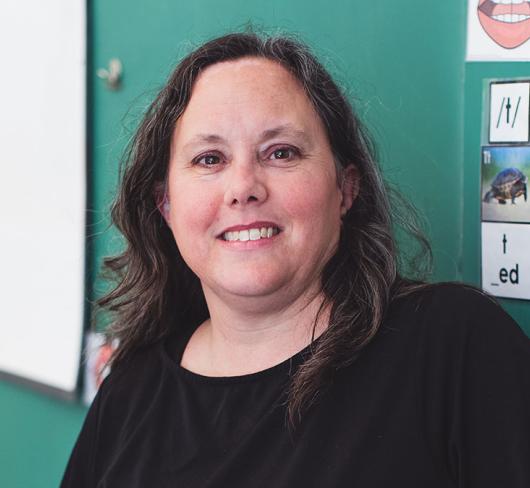
Self-Identification and Participation in ETFO
Understanding the difference between equality and equity can be difficult. A simple activity in which a group of people sit in a circle and place their shoes in a pile at the centre can demonstrate the difference. When everyone gets a random pair of shoes from the pile and puts them on, this demonstrates equality. Can they walk in them? Some participants will notice that they do not fit the shoes they were given and will realize individual needs (in this case, shoe size) have to be met so we can all participate equally. This demonstrates equity. Equality is our objective; equity is one of the ways we get there.
Since 2000, ETFO has asked members to self-identify if they belong to one or more of the following designated groups:
- Aboriginal
- Disabled
- Lesbian, gay, bisexual, transgender, queer or questioning (LGBTQ)
- Members of racialized groups
- Women
We ask for this personal information because ETFO’s commitment to equity and social justice includes the goal of increasing involvement and participation for members from the designated groups that are under-represented in leadership positions in our union. Every year, we report to the Annual Meeting about the participation of our members who self-identify. Collecting and reporting these statistics are ways ETFO holds itself accountable for this commitment. Members can self-identify on the annual member information form and on all registration and application forms for ETFO programs. Members may choose to self-identify for statistical purposes only or give ETFO permission to contact them with information about programs and opportunities (e.g., leadership programs, focus groups, writing groups, standing committees). Providing this information to ETFO allows staff to identify gaps in participation, programming and policy and to reach out to members from equity-seeking groups. In dialogue with members who self-identify (for example, in focus groups), staff can better understand the need for supportive resources, programs and services in response to barriers members experience in participating in their union. We asked members to share their insights and perspectives on self-identification with us. The following quotes are from members who self-identify in one or more of the groups.
Why did you decide to self-identify with ETFO?
“After much consideration, I decided to self-identify [Aboriginal] with ETFO because I believe that it is important to be proud of who you are and not to hide. I think this is important for the next generation to see that you can identify with your heritage, be proud and stand up for your people.” “I chose to self-identify as a woman because I am proud to be a woman and because despite all of the advances in equity … many people/institutions in society still do not view or treat us as equals.” “I first started self-identifying in Grade 7 so I could talk about my … disabilities ... I was proactive and assertive to have my needs met. Somehow along the way, I also became proactive for the needs of others.” “Personally and politically it is important to me to self-identify [racialized, LGBTQ]. I feel it is essential to be known and to be counted. After experiencing my own struggle of silence and oppression in early life, as I grew into my identities, I look back at that footprint and intend to spend the remainder of my days celebrating who I am.” How has self-identifying helped you? “When I self-identified as an Aboriginal woman, I was invited to take part in different Aboriginal education capacities within my union. Who knew Aboriginal people had a place in our union? I certainly didn’t back then. I knew our union cared about me. I met other Indigenous educators from across the province, and I had a sense of belonging.” “My favourite course of all time, no doubt about it, was Leaders for Tomorrow! I cannot say enough how important this course was in my development as a union sister and leader! I was pushed to stretch my limits in terms of personal growth and confidence to run for election. I learned to network and build allies with like-minded people throughout our union/province to achieve a common goal. I belonged!” “I participated on the Disability Issues Standing Committee, which opened many doors to network.” “Once I self-identified, other members approached me at various ETFO activities and thanked me for being open and giving them the courage to self-identify.” Confidentiality Despite the positive experiences many members have with self-identification, concerns about confidentiality linger, based on personal, lived experiences. ETFO acknowledges these concerns and protects members’ privacy in all its operations. Self-identification information is kept strictly confidential and is never reported in a way that could result in an individual member being identified. The Language We Use One continuing challenge in doing equity work of all kinds is how language use evolves with our understanding. Language is always changing, and sometimes particular words no longer capture the essence of the diversity of the population, or may be inappropriate for other reasons. For instance, recently ETFO changed its self-identification terminology from “racial minority” to “members of racialized groups.” Questions of minority and majority are not helpful in addressing discrimination and exclusion. Members participating in an ETFO event this past year shared their thoughts and perspectives on the word “Aboriginal” as an option for self-identification. This was an identity few claimed gladly; they did not feel this “umbrella” term adequately represented them or their cultural background. Many would prefer to identify as a member of a particular First Nations group. Working Toward an Inclusive Union The main objective of self-identification is to increase participation in ETFO and to instill a sense of belonging in the union among members of equity-seeking groups. ETFO is committed to collecting and reporting information on the identities of its members through the self-identification process. This is the first step toward the goal of barrier-free inclusiveness. The voices and perspectives of members of designated groups are needed to understand how to make ETFO a safe, welcoming and inclusive union for all its members, and how members can contribute to their union. ETFO respects and celebrates the diversity and authentic identities of its 78,000 members.
Rachel Mishenene and Carol Zavitz are executive staff members at ETFO.

